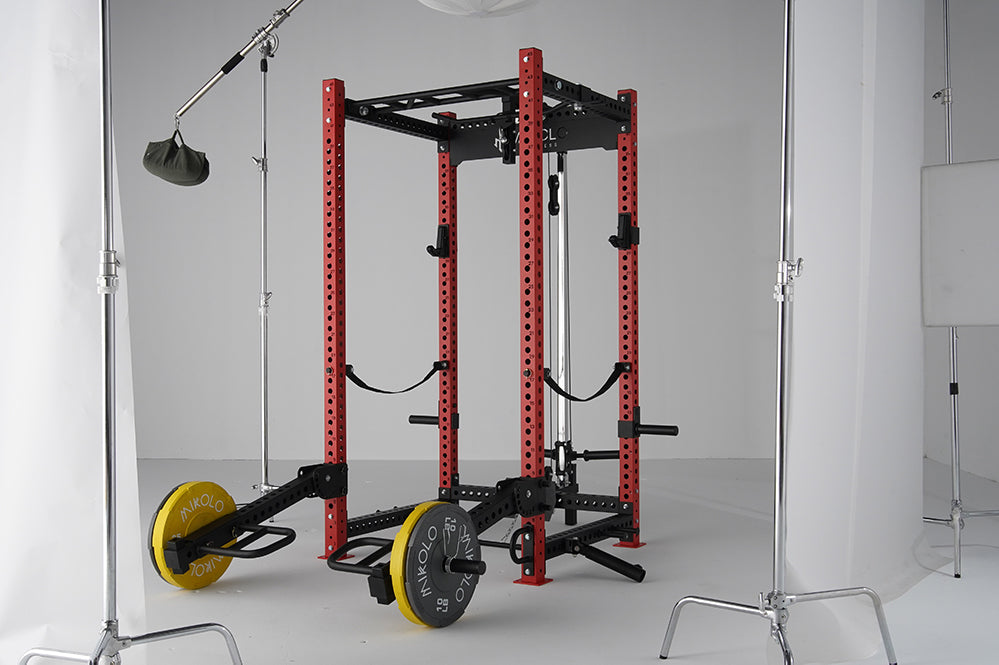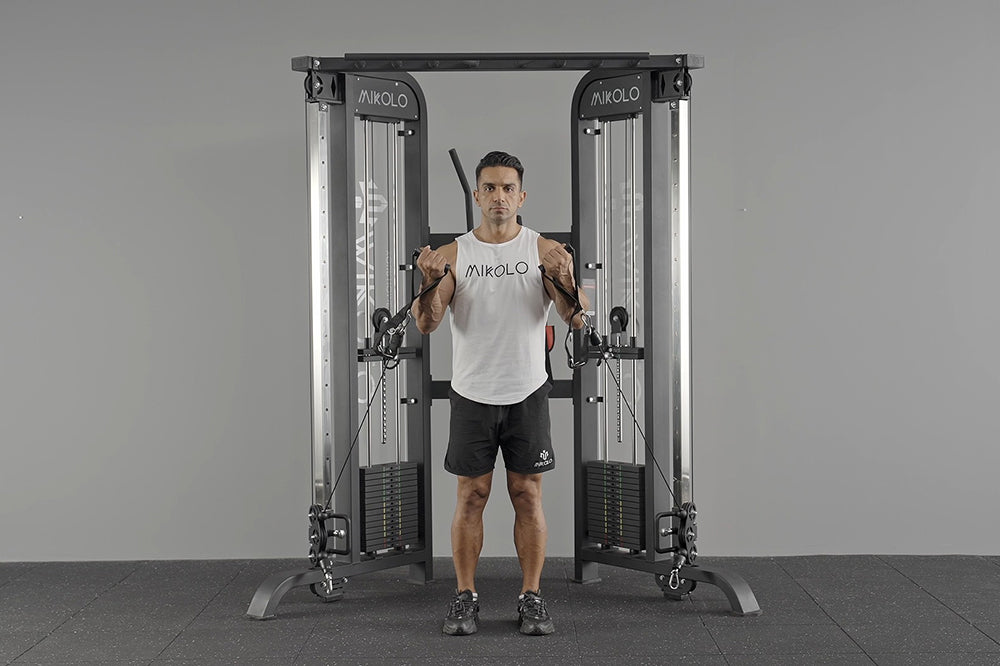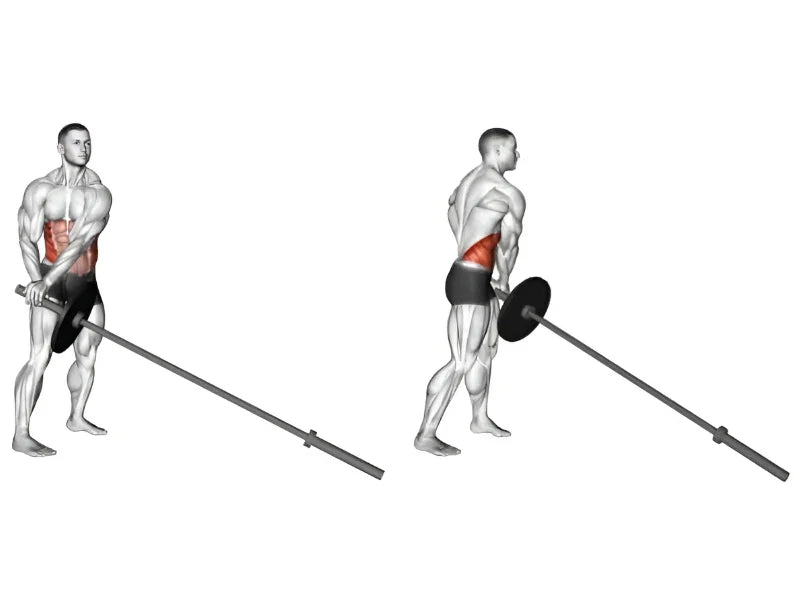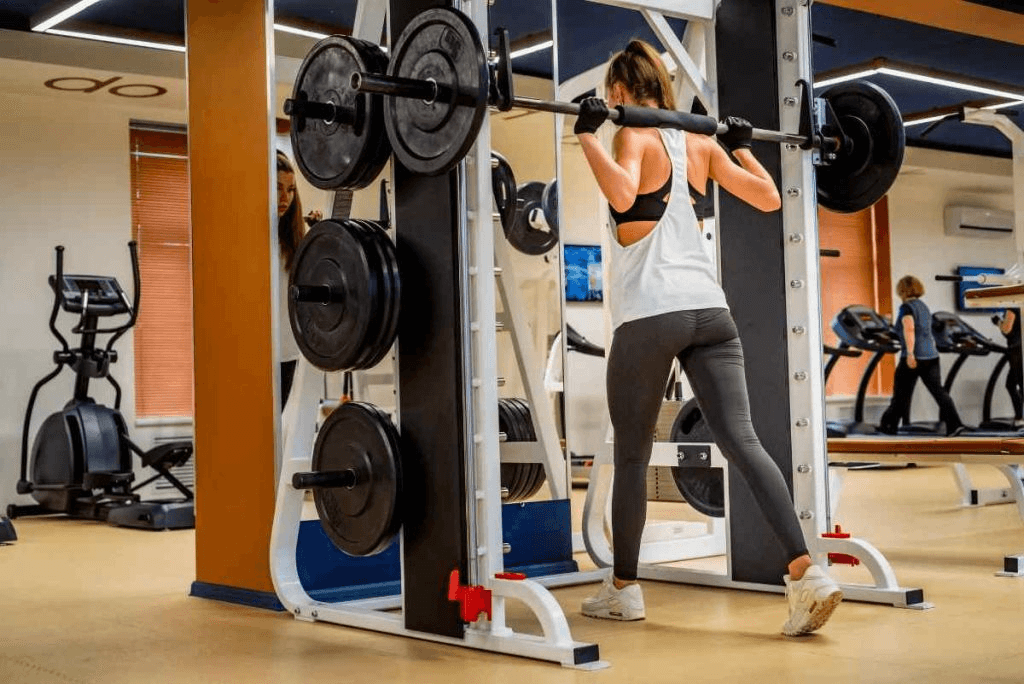In the ever-evolving world of bodybuilding, having the right equipment can make a significant difference in achieving your fitness goals. Two standout pieces of equipment that have gained immense popularity among bodybuilding enthusiasts are the power rack and the functional trainer. These versatile tools not only enhance the effectiveness of your workouts but also ensure safety and efficiency, making them indispensable in both home and commercial gyms.
The Power Rack: A Cornerstone for Strength Training
A power rack, often referred to as a squat rack or cage, is a fundamental piece of equipment for any serious bodybuilder. Its primary appeal lies in its multi-functionality, allowing users to perform a variety of compound exercises such as squats, bench presses, deadlifts, and overhead presses. These compound movements are essential for building overall muscle mass and strength, as they engage multiple muscle groups simultaneously, promoting balanced muscle development and enhancing coordination.
One of the standout features of the power rack is its emphasis on safety. Equipped with safety bars and spotter arms, a power rack provides a secure environment for lifting heavy weights. This safety mechanism is crucial, especially when training alone, as it prevents the barbell from dropping in case of muscle failure, thereby reducing the risk of injury. This self-spotting capability allows bodybuilders to push their limits confidently, knowing that they are protected during intense lifting sessions.
Flexibility is another key advantage of the power rack. Its adjustable height and versatile attachments accommodate users of different heights and allow for a wide range of exercises. Whether you are performing a low squat or an incline bench press, the power rack can be tailored to suit your specific training needs. Additionally, the ability to integrate various attachments such as pull-up bars, dip stations, and cable attachments further expands the range of exercises, making the power rack a highly adaptable tool for comprehensive strength training.
Moreover, power racks are designed to optimize space utilization. Modern power racks often feature a compact and sturdy design, making them ideal for home gyms where space might be limited. Despite their robust construction, these racks occupy minimal floor space while offering maximum functionality, ensuring that you can perform a full-body workout without needing a sprawling gym setup.
Functional Trainers: Enhancing Versatility and Functional Strength
While power racks excel in heavy lifting and compound movements, functional trainers complement them by offering a different dimension of training focused on versatility and functional strength. A functional trainer is a cable-based system that allows for a wide variety of exercises through adjustable cables and multiple attachments. This setup enables users to perform movements in multiple planes of motion, which is essential for developing functional strength that translates into everyday activities and athletic performance.
Functional trainers are celebrated for their comprehensive training capabilities. They facilitate multi-directional resistance, allowing for exercises that target various muscle groups from different angles. This not only enhances muscle definition and symmetry but also improves muscular endurance and core stability. By incorporating movements such as rows, lat pulldowns, face pulls, and cable crossovers, bodybuilders can achieve a well-rounded physique with improved muscle balance and coordination.
The diversity offered by functional trainers is another significant benefit. With a plethora of attachments like ropes, handles, and bars, users can customize their workouts to include pulling, pushing, twisting, and stretching exercises. This variety not only keeps workouts engaging but also ensures that muscles are consistently challenged, preventing plateaus and fostering continuous growth. Additionally, the ability to adjust resistance levels easily allows for progressive overload, a key principle in muscle hypertrophy.
Functional trainers also excel in promoting functional strength, which is the ability to perform everyday tasks efficiently and safely. Many exercises performed on a functional trainer engage the core and require stabilization, thereby enhancing overall body coordination and balance. This functional approach not only improves athletic performance but also contributes to injury prevention by strengthening the muscles and joints used in daily movements.
Space efficiency is another advantage of functional trainers. Typically designed with a modular and compact structure, these machines fit seamlessly into various gym environments, whether it's a spacious commercial gym or a compact home setup. Their integrated design allows for a wide range of exercises without the need for multiple standalone machines, making them a cost-effective and space-saving investment for bodybuilders.
Synergizing Power Racks and Functional Trainers for Optimal Results
Combining the power rack and functional trainer in your training regimen offers a comprehensive approach to bodybuilding. The power rack provides the foundation for building raw strength and muscle mass through heavy, compound lifts, while the functional trainer enhances muscle definition, endurance, and functional strength through diverse, multi-directional exercises. This synergy ensures that all aspects of muscle development are addressed, promoting balanced growth and preventing muscular imbalances.
Integrating these two pieces of equipment can significantly enhance training efficiency. For instance, you can perform heavy squats and bench presses using the power rack and then transition to functional trainer exercises like cable flyes and rows to target specific muscle groups and improve muscle symmetry. This combination not only maximizes workout variety but also ensures that you are training both strength and functionality within the same session, leading to more efficient use of time and resources.
Furthermore, the combination of power racks and functional trainers enhances safety and training effectiveness. While the power rack provides a secure environment for lifting heavy weights, the functional trainer allows for controlled, precise movements that target specific muscles without excessive strain. This balanced approach reduces the risk of injury and promotes sustainable training progress, ensuring that bodybuilders can maintain consistent workout routines without setbacks.
Conclusion
In the realm of bodybuilding, the power rack and functional trainer stand out as indispensable tools for achieving comprehensive muscle development and strength. The power rack’s versatility, safety features, and ability to facilitate heavy compound lifts make it a cornerstone of any strength training program. Meanwhile, the functional trainer’s multi-directional resistance, exercise diversity, and focus on functional strength complement the power rack by enhancing muscle definition, endurance, and overall athletic performance.
For bodybuilding enthusiasts looking to elevate their training, investing in both a power rack and a functional trainer is a strategic choice that offers unparalleled versatility and efficiency. By leveraging the strengths of each equipment, bodybuilders can create a balanced and effective workout regimen that promotes holistic muscle growth, improved functional strength, and sustained fitness progress. Whether you are training at home or in a commercial gym, incorporating these tools into your routine will undoubtedly help you achieve your bodybuilding aspirations with greater ease and effectiveness.














































Leave a comment
This site is protected by hCaptcha and the hCaptcha Privacy Policy and Terms of Service apply.